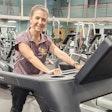![[Photo by Shutterstock]](https://img.athleticbusiness.com/files/base/abmedia/all/image/2016/06/ab.stakeholder616_feat.png?auto=format%2Ccompress&q=70&w=400)
This article appeared in the June issue of Athletic Business. Athletic Business is a free magazine for professionals in the athletic, fitness and recreation industry. Click here to subscribe.
The opening of a new recreation facility is an exciting event in any community, but for those who have been personally involved in the planning and design, seeing the final product takes on even greater significance. The building represents the culmination of months (maybe years) of planning, ideas, new technology, appealing aesthetics and budget considerations.

Identifying and gathering input from everyone who will use or work in a facility is crucial to the success of the project, and in the end creates a facility that respects their input and achieves the greater good. How are stakeholders identified and ultimately involved in the multifaceted design process to not only meet functional and budget considerations, but aesthetic goals, too?
IDENTIFYING KEY PLAYERS
Whether a community-based project or college recreation project, identifying a project's stakeholders is a similar process. Stakeholders should be selected to represent all interests related to the design of a facility, from the different departments and organizations that will use the facility to class instructors and maintenance personnel. This list may include university administrators, student government members, facilities personnel, university athletics officials, athletic teams, coaches, alumni, community groups, campus neighbors and donors — anyone with an interest in the facility or university.
"We encourage the university to invite as many stakeholders as possible to the table," says James Braam, vice president with Kansas City, Mo.-based architectural firm HOK. "Beginning with the very first meeting, we want to be sure everyone feels welcome, everyone has a voice. We begin with the attitude and promote a realization that the project is primarily about the students and campus community."
Public recreation projects can be more complex in their development, and thus might start with only a couple of initial stakeholders — possibly partners — and then expand to larger focus groups, including neighbors and likely end-users. All are considered to be stakeholders at various stages of planning, but the initial meetings are designed to build the foundation for an eventual comprehensive public input strategy. First, the initial partners must develop an understanding of each stakeholder's level of involvement: Operational? Financial? Asset contributor?
Once that has been established, the focus shifts to including as many community representatives as possible. "While the process of involving stakeholders in planning of community-based recreation facilities has always been essential, it has become even more important," says Ken Ballard, president of Ballard*King & Associates, a Highlands Ranch, Colo.-based recreation consultancy. "We are conscious of the need to not leave anyone out of the process. This expansive inclusivity is timely and costly, but provides opportunity for everyone to be recorded, and this is very important."
Traditional stakeholders can be identified as council members, user groups, community leaders and school personnel. Many of these groups can be made aware of the project and the opportunity to be involved in planning through traditional media such as public announcements or mailers. Technology provides increased opportunities to reach self-identified stakeholders through blogs, Facebook pages and other social media efforts.
"Face-to-face is a richer interaction, but to be sure we are not missing anyone, we rely on three to four different methods of gathering input to do a comprehensive job," Ballard says. The ultimate goal is to foster a sense of ownership and pride in the new facility.
The assessment of potential stakeholders is a continuous consideration, as planners circle back frequently to identify additional individuals and groups associated with the project. Project skeptics should also be invited and encouraged to participate in the process, adds Braam. "The consistent message is that we want people to dream, while also understanding the parameters."
GUIDING THE DISCUSSION
During every stage of the planning and design process, meetings are critical to gathering the necessary feedback. An initial meeting of all project stakeholders creates a climate for ongoing communication and inclusion. Throughout the process, stakeholders should be encouraged to speak freely and bring all ideas to the table. While not every idea can be included in the final design, finding common ground through focus groups, meetings, public forums and the use of social media ensures creative ideas are a priority and budget considerations are maintained.
Start with the end in mind, says Troy Sherrard, a partner with Moody Nolan, an architecture firm based in Columbus, Ohio. "Remove all barriers to ideas, focus on an ideal world and think beyond current conditions, situations and experiences," Sherrard says. "Work back from there."
Likewise, Braam encourages inclusive and open conversations. Subsequent meetings recap the exact words from prior stakeholder gatherings, expanding and building on previous ideas and thoughts. "This building will be unique to them," Braam says. "The stakeholders are making decisions, and we are facilitating."
One method he likes to use to gather thoughts and understand stakeholders' goals is through a series of question-themed workshops. "We literally go around the circle where everyone reads their answer — there is no wrong answer," Braam says. "We listen and write every word on a board to confirm for everyone that all thoughts are important. Everyone can see and hear all input."
A comprehensive gathering of stakeholders is ideal, allowing different representatives to hear the entire group and expand upon ideas. Collectively, the group comes to understand everyone's priorities. "The vice chancellor may be sitting next to a student," says Braam, with each expressing and hearing the other's ideas given equal merit. "We want to facilitate a culture of collaboration."
Sherrard acknowledges the challenges of encouraging such a free flow of ideas and how this might impact the ability to arrive at a consensus, but he says the payoff is worth it, with the discourse sowing the seeds for state-of-the-art designs and innovative use of technology. "Great ideas grow out of a collage of many ideas and points of view," Sherrard says. "By using this method, we gain new ground and maximize group input while also building consensus."
MEASURING SUCCESS
With every stage of the design process, Sherrard says it's important for the design team to "grade themselves" or check that they're truly hearing stakeholders' input. "Ask questions and facilitate a deeper understanding of why the stakeholders are in the design process," he says.
The finished product is the ultimate testament to a project's success, but it's all dependent on a cohesive and content body of stakeholders. When designing a new recreation facility for Auburn University, Braam felt the stakeholder group in particular excelled at inclusion and collaboration, and he likens the collaborative environment to a "family." Making the process especially gratifying, he says, was watching the family atmosphere seamlessly continue as graduating students passed the torch to new students.
Ballard saw how critical stakeholder involvement was when the Minneapolis Park District recently assessed the needs of all of its recreation centers. "This was an enormous, very complex project," Ballard says, adding that the engagement of a large base of stakeholders on multiple levels produced results that exceeded what was even thought possible — all by widening the net and capturing every available opportunity for input.
This article originally appeared in the June 2016 issue of Athletic Business with the title "Involving stakeholders in the facility design process"




































